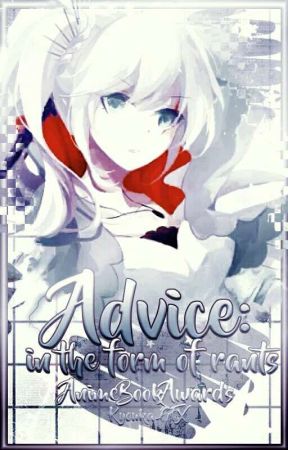Here we go again. This monstrosity.
*inhales* I must be calm. Do not... be... sarcastic... *exhales*
Okay.
To write a story, one must establish what tense and person they are going to be telling the story in. To do this, they need to understand the tone they want to set for the story and the characters they have (or are using).
But, there are a lot of people who just...
BLOODY FAIL AT ANY OF THE AFOREMENTIONED STEPS TAKEN TO WRITE A STORY.
For example, you have the smartasses who have ABSOLUTELY NO IDEA what person even is! How does this even happen?
Well, for the sake of those people, I'll explain briefly when and what the 'persons' are used for. Keep in mind that these are generalisations of person. There are subdivisions in each. I'm only explaining the bulk of it.
1st Person:
A main character 'Point of View' (PoV). This should be very opinionated and should be able to portray said character's relationships and thoughts about a matter.
The disadvantage is not being able to know anything beyond the character's knowledge. Meaning, they can't know exactly the problem or issue someone else is facing without being informed or told beforehand. Unless, they have an ability that allows them to do so.
These are used all across reading, especially in Young Adult (YA) reads, Teen Fiction and Romance.
2nd Person.
This is used in a more, informative fashion. It includes inclusive pronouns such as 'we' and 'us' or refers directly to the readers using 'you', 'you're' and 'you lot'.
Like this book, it can focus on a particular topic of arguement (for example, in a debate) or be expressed to persuade.
Most often used in Non-Fiction; Rants, Articles, Debates, Blogs, Arguements and Documentaries.
3rd Person:
This is used in almost all situations apart from areas where 2nd Person would be used. This is used in many types of media.
This usually offers a wider view of a situation, especially in stories. Compared to 1st person, a third person point of view can be omniscient. This means that the narrator knows all, and can share their opinion on such. Often features 4th wall breaking.
All characters can be talked about, regardless of your main character's prior knowledge. This makes writing certainly easier when it comes to particular situations; fights, as an example.
To be honest, I find 3rd Person a WHOLE lot easier than 1st. But, just like everyone else, I have preferences.
But, a problem that comes with the three 'persons' is the fact that people mix them. Like...
REALLY BLOODY OFTEN.
Just because you write 'x person's PoV' at the top, doesn't make it acceptable. Don't switch PoVs mid chapter. Keep it consistant and change PoVs in different chapters.
It makes things a whole lot neater. And a whole lot easier to follow.

YOU ARE READING
Advice - In The Form Of Rants
Non-FictionKiyomi watches a lot of anime and reads a lot of light novels. Even more than Akemi(light novels, that is). And because she does, she encounters so many clichés that irritate her it's almost amazing. But the more vocal of the two (especially in writ...
